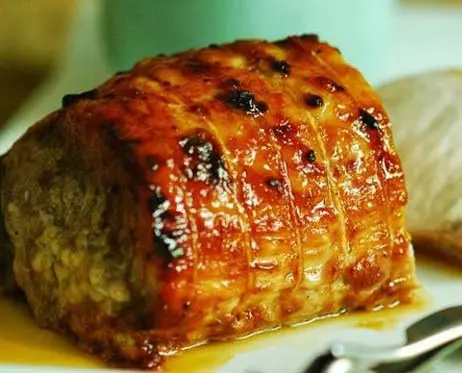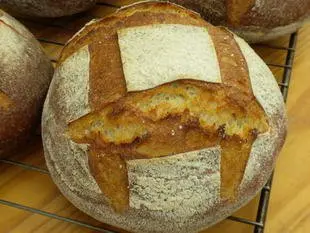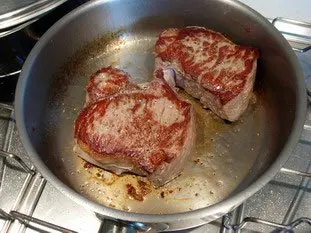Maillard reactions

With a name like that, they could well be some principle in mechanics, but in fact the term applies to something much closer to all of us: it's what gives food more flavour cooked than when raw!

You might think that there is nothing revolutionary in that, and that you already knew it: cooked meat has more flavour than raw meat! Of course that's true, but it took the good Monsieur Maillard to describe and explain the phenomenon.
In fact Maillard reactions crop up everywhere in cooking, and affect much of what we eat and drink.

- When the crust on a baked loaf is crisp and brown - that's them!
- When beer is brown (or amber-coloured) - there they are again!
- When coffee is dark after roasting and reveals its flavour
- When chocolate develops its delicious aromas after “cooking" the cocoa butter
- When the roast in the oven is covered with a fine and very tasty crust
- When the skin on fried chicken turns crispy
- When a dish just gets better and lightly browned on reheating
- You use your toaster
etc., etc.
If they are present, it's an excellent thing. It means that it's good, it's tasty, it has that great “properly cooked” flavour that I've already mentioned, and this is particularly true of cooking meat.
The consequence of all this is that we should try to encourage these reactions as far as possible. A simple example: when frying meat in a pan, it is better not to use a non-stick pan, so that the meat can stick on the bottom a little and the famous crust has a chance to form more effectively and more quickly. Unfortunately this can also stick well.

A final note on the subject – sheer genius – that I heard from the English chef Heston Blumenthal: if you cook meat in a non-stick pan, you can brown it beautifully in spite of this by turning the meat every 15 seconds throughout the cooking time. This needs to be done with tongs and not with a fork to avoid piercing the meat. It's a bit of a bind, but the result is remarkable!
PS : This also explains why those who enjoy steak tartare (which personally I find inedible, but each to his own…) are obliged to mix all manner of strong condiments with their raw meat: onion, herbs, sauces, egg yolk, etc., to give it some flavour. The same meat cooked would only need a sprinkle of salt and pepper, and voila!” … But at this point I'm just teasing my sister Isabelle, a real chip off the old block, who adores it just like her father!
Butter vs. grease
We often read in a recipe where a pastry is put into a mould that, just before pouring, the mould should be buttered or greased. But what's the difference between these 2 terms?December 1st 20251,8275
Getting out of the fridge early
Very often when you're cooking, you need to take food or preparations out of the fridge, to use them in the recipe in progress. There's nothing tricky about this: you just take them out of the fridge and use them, usually immediately, in the recipe. But is this really a good method?November 24th 20251,3545
Who's making the croissants?
When you look at a bakery from the outside, you naturally think that in the bakery, the bakers make the bread, and in the laboratory, the pastry chefs make the cakes. It's very often like that, with each of these professions having quite different ways of working, but sometimes there's also one...November 23th 20251,251
Oven height
When we put a dish or cake in the oven, we naturally tend to put it on the middle shelf, and that's what we usually do. But in some cases, this position and height can be a little tricky, so let's find out why.October 8th 20253,7235
The importance of sieving
In recipes that use a fine powder (flour, powdered sugar, etc.), you'll often see the advice to sift before using it. To sift is to pass the powder in question through a sieve (a very fine strainer) before incorporating it into your recipe. It's often advice, but is it really useful?September 3rd 20258,1993
Well-cooked meat
Have you ever noticed that if you like your meat well done, it invites strange looks? For instance, in a restaurant, when asked “How would you like that cooked?” If you reply, “Well done,” it is almost as if you are swearing….May 21th 201134 K 14.4
Cleaning endives
If you buy your endives elsewhere than in supermarkets, and in this case the best is of course from a market gardener, he or she is the one who planted and harvested them, in this case you will have endives full of earth or sand, depending on where they were grown, which is normal and reassuring, we...March 24th 202026 K4.6
Celeriac soups and the 3rd ingredient
Do you like celeriac, a vegetable that is not always a big hit? If your answer is "no" or "not so much", it is perhaps that you have in mind the celery remoulade, the emblematic starter, with the eggs mimosa, of the bistrot kitchen. It's very good, well if you like it of course, but it's a bit...May 21th 202213 K4.9
Your oven in "proofer" mode
In the bakery, proofing is a crucial stage in the process of making light, plump breads and pastries. During proofing, the yeast ferments the sugars present in the dough, releasing carbon dioxide which forms bubbles. This process allows the dough to swell and aerate, guaranteeing a soft, light...September 27th 202411 K5
Making the most of seeds: Dry roasting
In cooking, and particularly in baking, there are a lot of seeds we can use, such as linseed, sesame, poppy, etc. Usually, recipes simply say to add them just as they are to the mixture or dough. To make a seeded loaf, for example, prepare a plain bread dough as usual, then, towards the end of...January 30th 201563 K4.0









